Bunya nuts are in season, and it is easy to see why aboriginal people arranged festivals around bunya season. We stopped on the way to Brisbane to visit our son and pick up a native bee hive (more on that later) and picked up half a dozen cones that had dropped from a tree. A feasting quantity.
Bunyas aren’t a taste sensation but they’re nice – a fairly mild, slightly sweet, chestnut or waxy potato flavour. They dry out if they are roasted once they are shelled, and they don’t absorb sauces or marinades very well – in curries and dishes like that, the bunyas are a bit of a filler. They make a good “potato salad”, and they work really well in pesto, and I’m experimenting with grinding them the way aboriginal people used to and making cakes or patties. But so far, my favourite use of them is just boiled and served with a dipping sauce.
I took these to a party last night. I actually took a couple of dipping sauces. The mayo and harissa one was very good, and lemon butter with parsley is nice, but this was the one that won the day.
The Recipe:
The Bunyas:
The method here is exactly the same as preparing them for pesto, or really anything else. The big green cones fall apart as they ripen. It’s fairly easy to peel off the corm to release the nuts inside, that look like this:
 You can roast them at this stage, but I think they are better boiled or pressure cooked. Boiling takes an hour or so, but pressure cooking is much faster. I pressure cooked these for 20 minutes then cooled them, then cut them in halves and scooped out the nut.
You can roast them at this stage, but I think they are better boiled or pressure cooked. Boiling takes an hour or so, but pressure cooking is much faster. I pressure cooked these for 20 minutes then cooled them, then cut them in halves and scooped out the nut.
There is a knack to doing this without cutting your fingers off. Use a big heavy knife – the kind you’d use for a pumpkin. Hold the nut with one hand, sitting it on its fat end, and get the blade of the knife dug in across the pointy end. Shift your holding hand to the top of the knife and cut down. Once you have the knack, it’s easy and fast.
The Dipping Sauce:
The basis for the sauce is home made whole egg mayonnaise.
Two Minute Mayonnaise
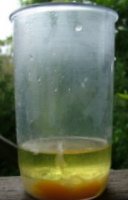 The super easy, super fast, super reliable way to make mayonnaise is with a stick blender. No dribbling the oil in, no splitting, no whisking.
The super easy, super fast, super reliable way to make mayonnaise is with a stick blender. No dribbling the oil in, no splitting, no whisking.
There are two bits of chemistry that make it work.
- You put all the ingredients in the blender jug and they separate. The oil floats on top of everything else.
- You put the stick blender in the bottom and start it, and it creates a little vortex, dragging the oil down at the perfect rate to emulsify it.
Works every time.
It’s so easy, I like to make small amounts of fresh mayonnaise when I need it, rather than a big batch to keep in the fridge. It uses raw egg, so it’s good to make with eggs from chooks you know are well fed and healthy.
Put in the blender jug:
- 1 whole egg
- juice of ¼ lemon
- good pinch of salt
- 100 ml of light olive oil (or other mild flavoured oil – not virgin olive oil – it makes bitter mayo).
Put the stick blender in and let it settle for a minute to separate into layers. Then, with the blender fully submerged, hit the button. Once it has started to emulsify, you can move the blender around. Don’t think you can make less by skimping on the oil – it won’t thicken. If it is thin, pour another swig of oil on top, and with the blender fully submerged, hit the button again.
Once the mayo is emulsified, add:
- 6 fresh kaffir lime leaves, roughly chopped
- big marble of peeled ginger, roughly chopped
Blend until they are blended in. Taste for enough salt. Scrape into a dipping bowl, and, if you can, leave in the fridge for an hour or so for the flavours to blend in.
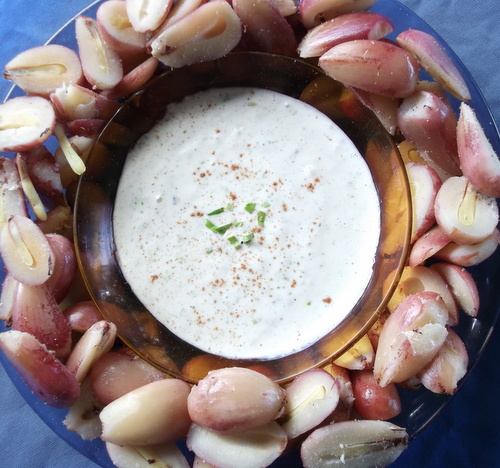
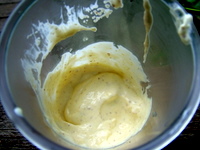
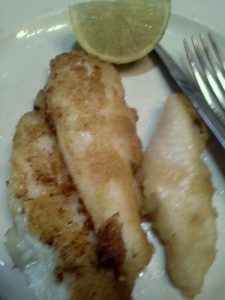
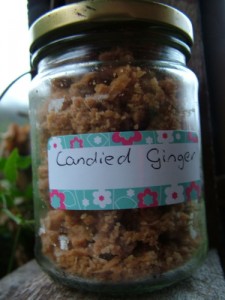
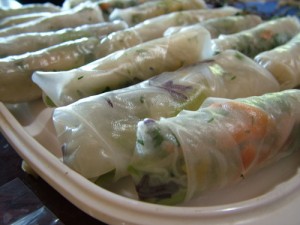
I just wanted to say that I love receiving your blog. The posts you make the great effort to put up are always so interesting to read and always really educational. They stick in my thoughts and your guidance and tips are so easy to follow and make so much sense. Thanks for keeping up the great work. I always really look forward to learning about your experiences with your garden, nature, this beautiful Australian earth and your community. Just wanted to let you know. Thanks, Kylie
Thank you Kylie. Comments like that make it worthwhile.
Hi Linda
I love your blog and am always so excited to find a new one awaiting me in my inbox. I am about to start processing my bunya nuts so will try this recipe. Last year I ground and dried the boiled nuts so was able to store them in clean jars. I feel to comment on your describing of a aboriginal practice in the past tense. Aboriginal people continue to practice their culture in different ways every day including harvesting and processing bunya nuts.
check out the bunya festival held on kabi kabi/ gubbi gubbi land
http://www.barunglandcare.org.au/Resources/Documents/Bunya%20Dreaming%
202014%20Tours%20Flyer.pdf
thanks so much Sharon
I
Hi Linda,
I love seeing a post from you in my inbox 🙂
I have one bunya tree that drops bunya cones but haven’t successful got any nuts yet – fingers crossed will get some this year and try your recipe.
Thanks so much
Kathy
That is so good to know Sharon. I thought bunya festivals were a thing of the past, and I’m so pleased they are ongoing. There is so much knowledge there.
Ahaaaaa! Just yesterday I had to pitch a batch of mayo. It was so awful and I couldn’t figure out what went wrong. Now I know it was the high dollar, EVOO that I used instead of a lighter oil. Thanks for the heads up on that. I also just fed my sourdough starter so I can make your sourdough naan tomorrow. Thanks again.
It’s great to see other people using Bunya nuts in their cooking! I tried it as a substitute for pine nuts in pesto but I don’t think it was that great – I end up just eating them as snacks. I have went out and picked up a whole heap from the roadside the other day, and look forward to eating them again after the 2 year hiatus!
Hi Jo, I like them in pesto, but maybe its a matter of taste. They are much less oily than pine nuts, or my very favourite, macadamias.
Hi , I have a big bunya tree in my back yard and it’s dropping these cones everywhere I’ve been trying to give the away but no luck now im on the central coast near Gosford if anyone wants some come and get em.
Hi Marty, I so would if I were closer! I’ve been making pancakes with them, just blending the boiled, skinned nuts with an egg and a little milk and cooking like normal pancakes. They’re very good.
I love eating bunya nuts, interested to know when you pressure cook for 20 mins do you keep the gas on high for that time or let the cooker start hissing and turn it down? I have been doing it for around 30min but keen to have shorter cooking time.
Hi Tarang, I think the concept of pressure cooking is that the higher the pressure, the higher the boiling point of water. So by sealing the pot and putting the weight on, you can get the water inside higher than 100 degrees C. But I think once it gets to pressure and starts burbling, that’s as hot as it can get and keeping the gas on high doesn’t make it go any faster. (Any physics people out there? Is this right?) Maybe the length of cooking they need varies with variety? Or age? I find 20 minutes in the pressure cooker does mine, but they are always pretty fresh (just because I’m impatient!) and our trees are young. And also, I find with the opening technique in this post, you don’t need to get the shell super soft, just open up the point a bit and soften the shell.